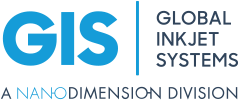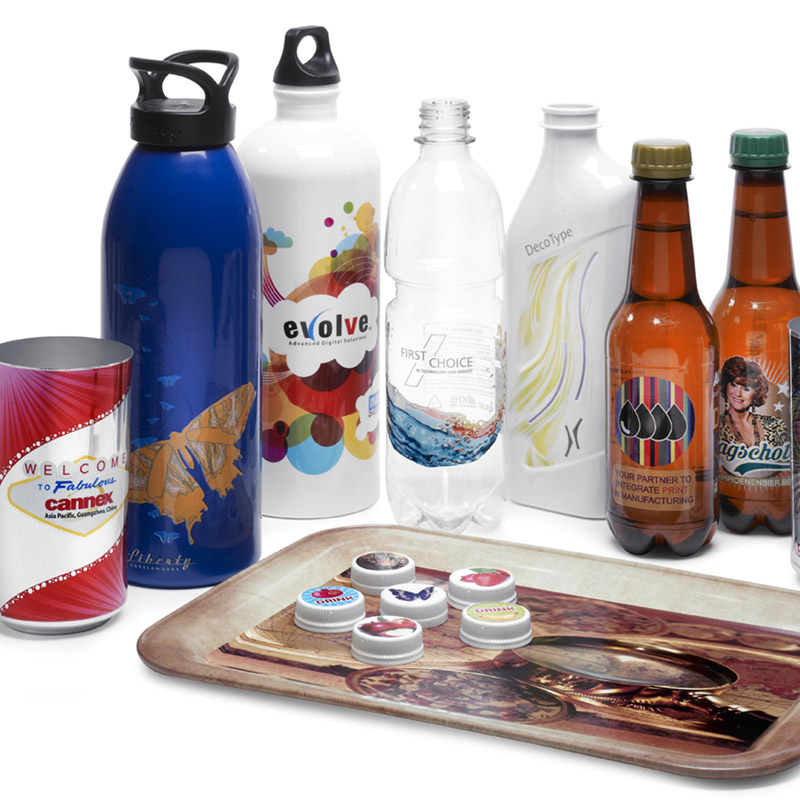Summary
Decorating objects using inkjet technology is not a new application. Now the market has expanded considerably with production-capable systems printing anything from industrial saw blades to perfume bottles.
The drivers for the adoption of digital technology and the growth of product decoration using inkjet are well known. Although inkjet may not be the technology of choice for long runs with the same image, for many other jobs the arguments for inkjet are increasingly compelling.
Recently, we’ve seen the growth of semi-production-capable systems for product decoration, and also the introduction of systems that print onto tubes and even conical shapes. In addition, systems have been introduced for printing onto cylinders, tubes and even tubs that may start to challenge traditional analogue technologies in terms of productivity, plus having all the added benefits of digital technology.
GIS has developed software for curved surface printing with multi-dimensional nozzle, density and screener correction technology that can be adjusted to each surface type as required.
As direct product decoration becomes mainstream and more machine vendors enter the market, the pressure will be on further innovation in ink technology and process development to open access to more applications. Certain sections of the market will aim for increasing productivity; others will target compact, smaller systems. Print quality always will be critical, and the ability to print taller images onto cones and tubs highly desirable. One thing is clear – direct product decoration of a wide variety of objects is a growing opportunity for printers to expand their businesses, and the range of systems offered to tempt them will surely increase.
Market Overview and Challenges
Decorating objects using inkjet technology is not a new application – the small-format, semi-desktop flatbed scanning devices that print such promotional items as USB memory sticks, lighters and key chains have been successful, but have tended to be limited to objects of a certain size and height. Now the market has expanded considerably with production-capable systems printing anything from industrial saw blades to perfume bottles.
The drivers for the adoption of digital technology and the growth of product decoration using inkjet are well known:
- Cost-effective short runs
- The ability for every image on each object to be different, offering new marketing opportunities
- Potentially significant reduction in overall costs, as so many consumables required for screen or pad printing are no longer needed
Although inkjet may not be the technology of choice for long runs with the same image, for many other jobs the arguments for inkjet are increasingly compelling.
Recently, we’ve seen the growth of semi-production-capable systems for product decoration and the introduction of systems that print onto tubes and even conical shapes. Systems have also been introduced for printing onto cylinders, tubes and even tubs that may start to challenge traditional analogue technologies in terms of productivity, plus having all the added benefits of digital technology.
Flat and semi-flat surfaces
Printhead reliability has improved dramatically in the past 10 years, and inkjet technology has become much more accepted in industrial applications. However, maintaining accurate drop placement on a range of surfaces still can present challenges.
Product decoration often requires inks to adhere to a very wide range of substrates – wood, glass, metals and many types of plastics. Different products may require different surface pre-treatments or primers before inkjet printing, or they may require coating after printing. Compatibility with other parts of manufacturing and other regulatory requirements all add to the challenge.
However, innovative ink development and careful process development have opened up many new applications to inkjet technology, and new systems have been developed specifically for these opportunities, e.g.
- In the flatbed arena, companies have created custom systems to print onto larger objects
- In single pass, there has been a profusion of new product introductions
Overcoming limitations
Inkjet printheads are designed to print onto flat surfaces, and throw distance can affect print quality dramatically.
Throw distance is the sort of challenge that, for example, printing onto a washing machine control panel presents. The substrate may be flat in some print areas, but the plastic mould may have parts that protrude and require that the printhead be positioned higher than optimum to avoid damaging the nozzle plate. Much depends on the type of image being printed – small text and fine barcodes typically are less forgiving than some graphics.
Ink development has come a long way already, but regulatory requirements still bar inkjet from some large markets, such as on toys and when ink is in direct contact with food.
However, the introduction of low migration inks compliant with legislative mandates have enabled inkjet to enter some of these previously inaccessible markets. Systems now are available that print directly onto PET beverage bottles, and other inkjet systems available print directly onto medical bags, syringes and blister foils.
Curved surface printing
There are a growing number of new systems that can print onto curved surfaces. Most of the new systems print onto cylinders or tubes, which do not require image compensation. Cut a tube lengthwise and lay it flat and you have a rectangle or square – essentially the printers are wrapping a “flat” image around the cylinder.
However, the physical characteristics of the printhead create new challenges. Three key issues exist:
- Printhead symmetry
- Distance between nozzle rows
- The number of nozzle rows
Symmetrical orientation of the object under the printhead is important.
Printing onto conical objects adds greater complexity and challenges for inkjet – image compensation is required to wrap the image around the cone, and the system also has to contend with resolution changes as the cone rotates under the printhead, so screening complexity and the need to compensate for drop density increase. Without correction, these errors can result in unacceptable image quality.
GIS has developed software that works excellently on conical objects but also is ideal for more complex objects with discontinuous curves, such as tubs. The GIS multi-dimensional nozzle, density and screener correction technology can be adjusted to each surface type as required.
What’s next?
As direct product decoration becomes mainstream, the pressure will be on further innovation in ink technology and process development to open access to more applications. Print quality always will be critical, and the ability to print taller images onto cones and tubs highly desirable.
Direct product decoration of a wide variety of objects is a growing opportunity for printers to expand their businesses, and the range of systems offered to tempt them will surely increase.


